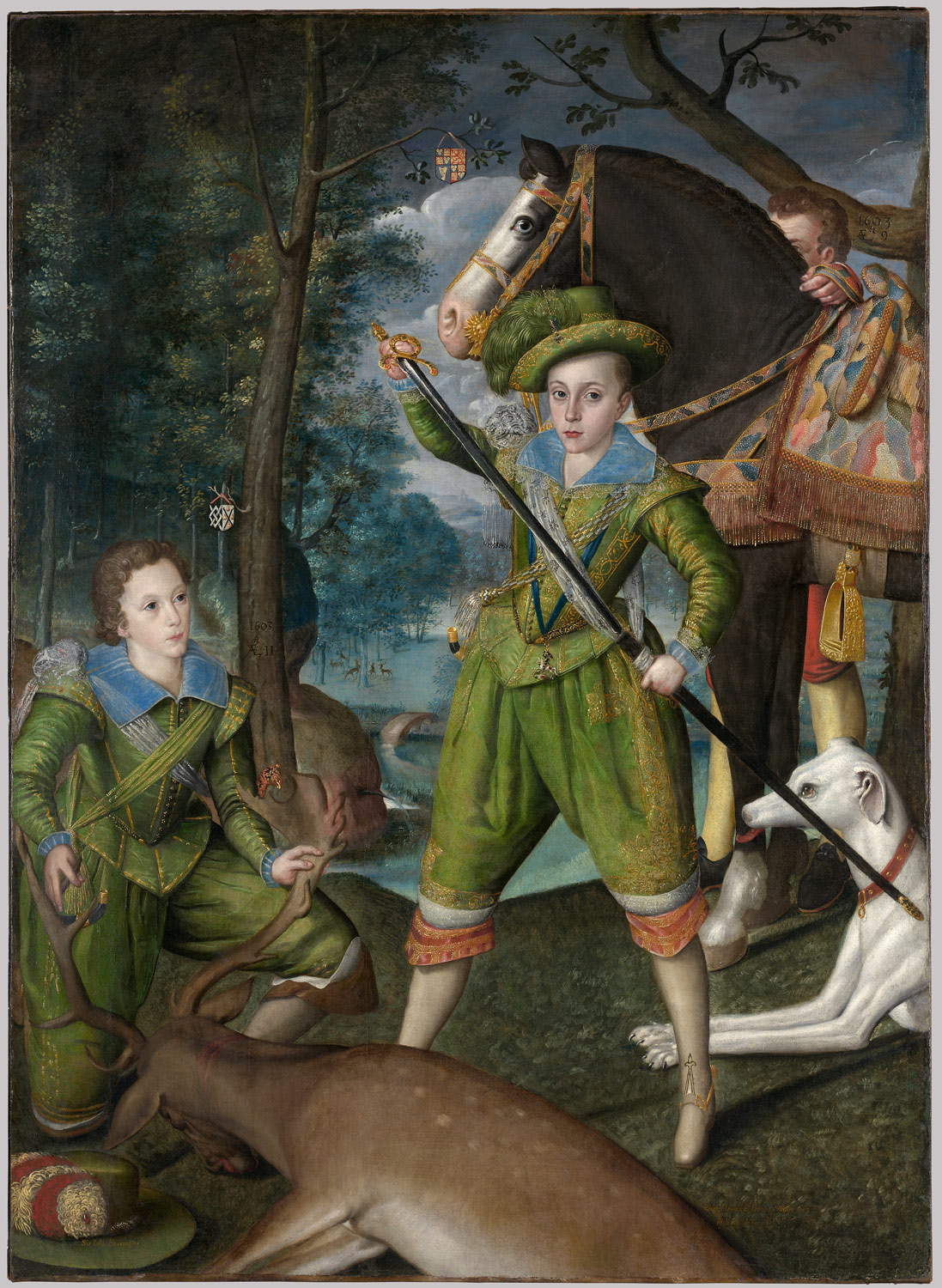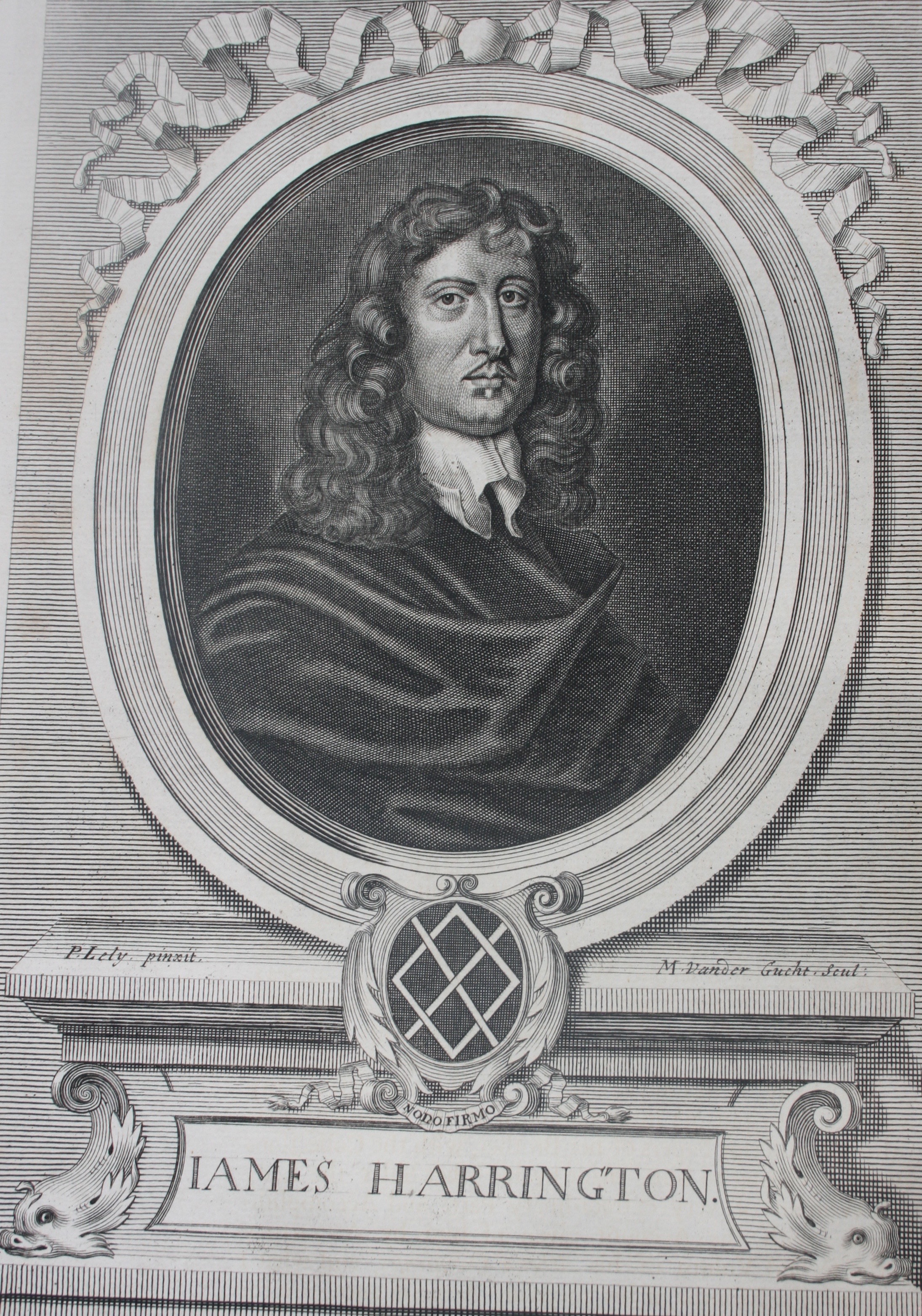Mourning jewellery and bequests in wills are two ways in which dead friends and relatives might be remembered. Another method of remembrance, one that also remains just as common in the twenty-first century as it was in the seventeenth, is physical memorials or monuments of one kind or another. As the father of two young children my husband was particularly concerned to leave some physical mementos behind and one idea that appealed to him was for us to have a bench made in memory of him that could be placed in a quiet spot at an English Heritage property near our home. It is a site that all four of us loved and which we visited many times. The bench would be a public memorial to John, but it would also provide the three of us with a place where we could go to sit and think about happy times together.
Monument to Sir James and Lucy Harrington in the Church of St Peter & St Paul, Exton, Rutland. Image by Catherine Snowball.
Reading the wills and visiting some of the places associated with the Harrington family drew to my attention the importance to them too of public memorialisation. James Harrington’s grandfather and namesake Sir James Harrington of Ridlington (d.1614) appears to have been particularly committed to this practice. In the first place, Sir James was responsible for the memorial in the church of St Peter and St Paul in the village of Exton in Rutland, which commemorates his father (and my James Harrington’s great grandfather) Sir James Harrington of Exton (1511-1592) and his wife Lucy Sidney. They both lived into their 70s and together they bore eighteen children. The monument depicts the couple kneeling at a prayer desk facing each other. Sir James Harrington of Ridlington, who was sole executor of his parents’ wills, explained his reason for erecting the monument, and in doing so reflected the dual purpose that such memorials perform. It was dedicated, he explained, to the ’eternal Memory’ of his father and mother, but as well as commemorating them, it also served a function for their living relatives, and particularly Sir James himself: ‘that he might as well perform to his Parents their Rites, as leave a Testimony of his own Piety to Posterity’. While the motivations behind our bench were entirely secular, it too was to serve a purpose both for John and for the three of us left.
Kelway Monument in the Church of St Peter & St Paul, Exton, Rutland. Image by Catherine Snowball.
A second Harrington monument in Exton church is known as the Kelway monument. It celebrates the union between the Kelway and Harrington families via the marriage of Sir James and Lucy’s eldest son John Harrington to Anne Kelway, daughter of Sir Robert Kelway a well-known Elizabethan lawyer. This richly decorated alabaster monument depicts the effigy of Robert Kelway in the centre, with his daughter Anne, son-in-law Sir John and their son, also John Harington kneeling alongside. It was, of course, Sir John and Anne who became the guardians of James I’s eldest daughter Elizabeth. Moreover, there is a further memorial to Elizabeth and her connection to the Harington family in the nearby Tunnely Wood, since one of the paths in the park is still known as the Queen of Bohemia’s ride.
The Exton monument to Sir James and Lucy Harington was not the only one commissioned by Sir James Harrington of Ridlington during his lifetime. And it would seem that by the time of his own death, just over twenty years later, he no longer felt the monument to his parents to be a sufficient testimony to his own piety or his family’s honour. Sir James’s will, which was written on 21 July 1613 and proved on 14 February 1614, refers to him having set up a little memorial at Ridlington. This memorial can still be seen in the Church of St Mary and St Andrew, in the north wall of the chancel. It is a small alabaster monument with entablature depicting Sir James and his first wife Frances who was the co-heiress of Robert Sapcote. Significantly Sir James and his wife are depicted facing each other in a kneeling position, presumably deliberately echoing the stances of his parents in the Exton monument (and, indeed the Kelway monument too). Moreover, Sir James decreed in his will that on his own death he wanted inserted onto the monument the date of his death ‘and my stile with a blouddie hand in a Scutchin which honor the king hath given us of that rank’. His justification for this request, though probably designed to remind later observers of his family’s connections to the Stuarts, was at least expressed in a tone of modesty: ‘which though I have noe pride therein, so doe I not disdaine that badge his majestie hath given to me and my heirs male for ever’.
Bench in memory of John Gurney. Image by Rachel Hammersley
Since a bench in his memory was one of just a handful of things that John was very insistent about before his death, it was, of course, one of the tasks I quickly put my mind to after he had died. Making the arrangements was not entirely straightforward, not least because for a long period of the winter months English Heritage’s legacy office in London (which approves and makes arrangements for benches to be constructed and situated appropriately) was only open Monday to Friday while the local site was only staffed on a Saturday and Sunday, making it difficult for them to liaise with each other. However, English Heritage’s staff were extremely helpful and supportive. They found us a beautiful secluded spot for the bench and co-ordinated its construction. Consequently, just over six months after John’s death our bench was installed. We visit it on special occasions and anniversaries and sometimes just when we are passing. Friends who know about it have visited it too and I have even had acquaintances tell me that they found it unexpectedly and spent a few minutes sitting and thinking about John and our family. It may not be an alabaster monument with detailed carved figures and family crests, but in many ways it does a similar job, and in its quiet beauty and dignity it is a fitting tribute to John.

























